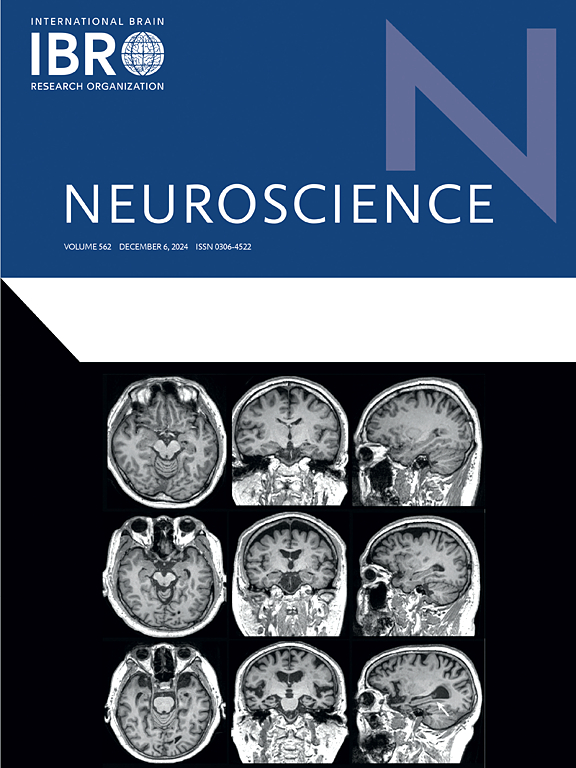Huddling promotes adult neurogenesis in the brain regions related to social behavior in cold-exposed Brandt’s voles
IF 2.9
3区 医学
Q2 NEUROSCIENCES
引用次数: 0
Abstract
Social thermoregulation behaviors such as huddling among individuals can be important for energy conservation and thermoregulatory processes. Beyond that, whether huddling behavior regulates neural plasticity in the brain remains unknown. We hypothesized that huddling regulates adult neurogenesis in brain regions related to social behavior and thermoregulation. We found that cold-exposed voles had decreased aggression and increased social interaction in association with higher oxytocin but lower vasopressin hormones compared to warm-exposed voles. Cold decreased the level of cell proliferation labeling indicated by BrdU (a marker for cell proliferation) in the anterior part of the subventricular zone (SVZ) in the brain, and notably, cold-huddling (CH) voles had a higher number of proliferating cells in the hypothalamus than cold-separated (CS) voles. Moreover, CH voles displayed higher cell survival in the central amygdala and paraventricular nuclei (PVN) of the hypothalamus (both regions were related to social behavior) in comparison to CS or warm-huddling (WH) voles, respectively. Furthermore, the CH voles had more BrdU/NeuN (markers for new neurons) double-labeled cells in the SVZ than WH voles, and also more BrdU/GFAP (markers for new glial cells) double-labeled cells in SVZ and dentate gyrus compared to WH and CS voles. In addition, the newly-generated neurons differentiated into more oxytocinergic neurons in the PVN of the CH voles. Together, these data support the notion that huddling behavior is beneficial for brain plasticity by protecting cell proliferation, survival, and differentiation, and may be involved in regulating social behavior in small mammals in cold environments.
在寒冷暴露的勃兰特田鼠中,挤在一起促进了与社会行为有关的大脑区域的成年神经发生
个体之间的挤作一团等社会体温调节行为对节能和体温调节过程很重要。除此之外,抱团行为是否会调节大脑中的神经可塑性仍然未知。我们假设,在与社会行为和体温调节相关的大脑区域,挤在一起调节成人神经发生。我们发现,与暴露在温暖环境中的田鼠相比,暴露在寒冷环境中的田鼠的攻击性降低,社交互动增加,这与催产素升高有关,但抗利尿激素降低。低温降低了脑室下区(SVZ)前部BrdU(细胞增殖标志物)所指示的细胞增殖标记水平,值得注意的是,冷挤压(CH)田鼠下丘脑的增殖细胞数量高于冷分离(CS)田鼠。此外,与CS或暖蜷缩(WH)田鼠相比,CH田鼠在中央杏仁核和下丘脑室旁核(PVN)(这两个区域与社会行为有关)分别表现出更高的细胞存活率。此外,CH田鼠SVZ中BrdU/NeuN(新生神经元标记物)双标记细胞比WH田鼠多,SVZ和齿状回中BrdU/GFAP(新生胶质细胞标记物)双标记细胞比WH和CS田鼠多。此外,新生成的神经元在CH田鼠PVN中分化为更多的催产素能神经元。总之,这些数据支持这样一种观点,即通过保护细胞增殖、存活和分化,抱团行为有利于大脑的可塑性,并可能参与调节寒冷环境下小型哺乳动物的社会行为。
本文章由计算机程序翻译,如有差异,请以英文原文为准。
求助全文
约1分钟内获得全文
求助全文
来源期刊

Neuroscience
医学-神经科学
CiteScore
6.20
自引率
0.00%
发文量
394
审稿时长
52 days
期刊介绍:
Neuroscience publishes papers describing the results of original research on any aspect of the scientific study of the nervous system. Any paper, however short, will be considered for publication provided that it reports significant, new and carefully confirmed findings with full experimental details.
 求助内容:
求助内容: 应助结果提醒方式:
应助结果提醒方式:


